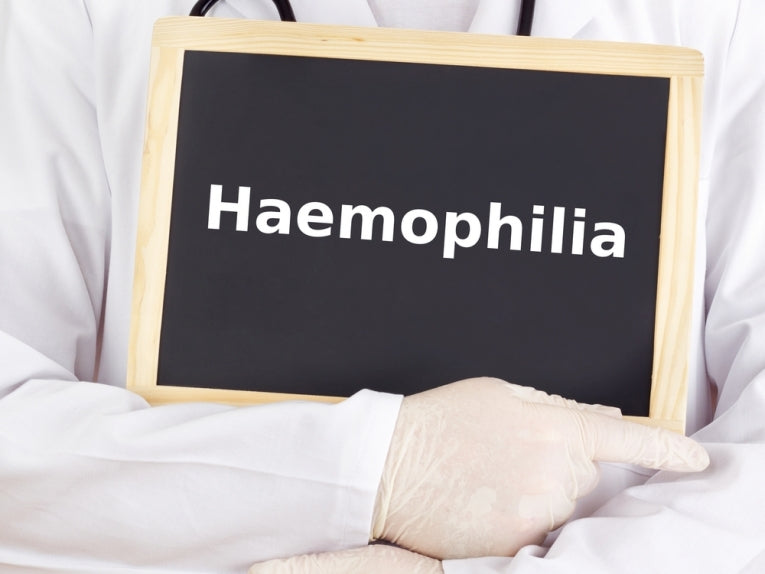Haemophilia is a lifelong bleeding disorder where blood is prevented from clotting properly. In normal conditions, a particular protein in the blood controls bleeding by causing it to clot and people with haemophilia either do not have enough of this protein, or else it does not work properly.
Haemophilia affects approximately one person in 10,000, meaning that there are around 700,000 people in the world who have the condition.
The severity of a person's bleeding disorder usually depends on the amount of clotting factor that is missing or not functioning and the most common bleeding disorder is known as von Willebrand disease. This is generally less severe than other bleeding disorders and many people with this condition are unaware that they have it because their bleeding symptoms are very mild.
But for a person with serious haemophilia, even a seemingly minor injury can result in uncontrolled internal bleeding. Bleeding into joints and muscles will cause severe pain and disability, while bleeding into major organs such as the brain, can result in death. Naturally this is a disease that will have serious implications on a person's lifestyle.
In addition there are what are known as rare clotting factors, which are bleeding disorders in which one or more of the clotting agents is missing or not working properly. Less is known about these disorders because they are diagnosed so rarely and many of them have only been discovered within the last 40 years.
It was in 1963 that Frank Schnabel established the World Federation of Haemophilia (WFH). This is a global network of patient organisations that now has members in 122 countries. It is officially recognised by the World Health Organisation (WHO).
The first World Haemophilia Day was on 17th April 1989. 17th April was Frank Schnabel's birthday and the day was chosen in his honour.
"One of the greatest benefits of participating in World Haemophilia Day", says the current WFH president Alain Weill, "is the recognition that our community is more powerful when we work together. People from around the world will mark this day and raise awareness about the need to achieve treatment for all."
The sad fact is that 75% of those suffering from haemophilia still receive very inadequate treatment, or in many cases, no treatment at all. Haemophilia can affect anyone, anywhere and although during the last 50 years improvements in treatment have been dramatic, the vast majority of people with bleeding disorders live in the developing world and have no access to proper care.
The WFH has made substantial progress in promoting sustainable treatment around the world. Experts have been trained in the field and they are able to diagnose the condition and manage patients. WFH has also been instrumental in advocating for an adequate supply of safe treatment products for all people with bleeding disorders.
Much work has also been done in the area of education, so that people who are suffering from haemophilia can learn how they can better manage their condition in order to live healthier, longer and more productive lives.
The WFH's message is that it is important to reflect on where we have been and where we want to go, so that together we can close the gap that continues to exist between those who have the condition and those who don't.
The aim is to lay a solid foundation upon which future care and support can develop. In that way the gap in care can be closed so that eventually effective treatment for all will become a reality.
The task is something of an uphill struggle and in addition to World Haemophilia Day helping sufferers to feel less isolated; it can also remind those who don't have the condition that there is a continual need for support.










